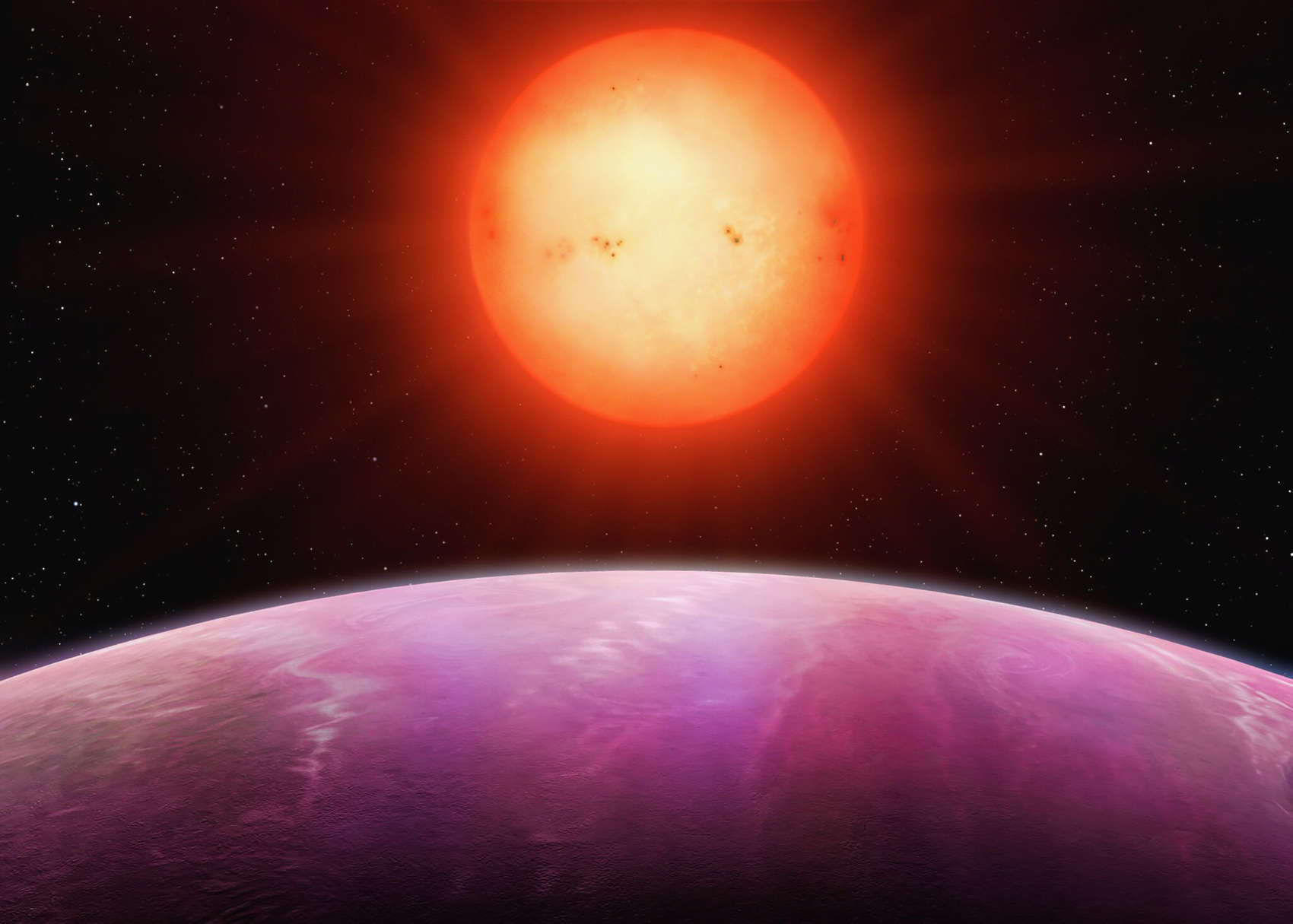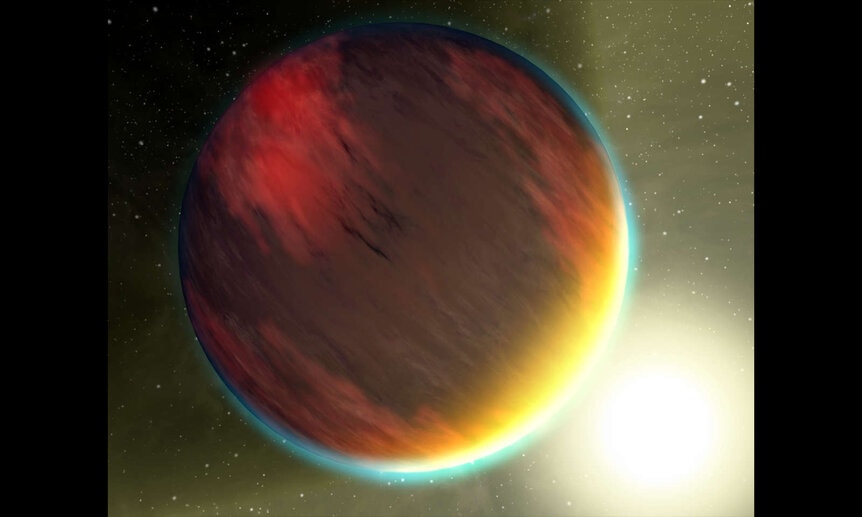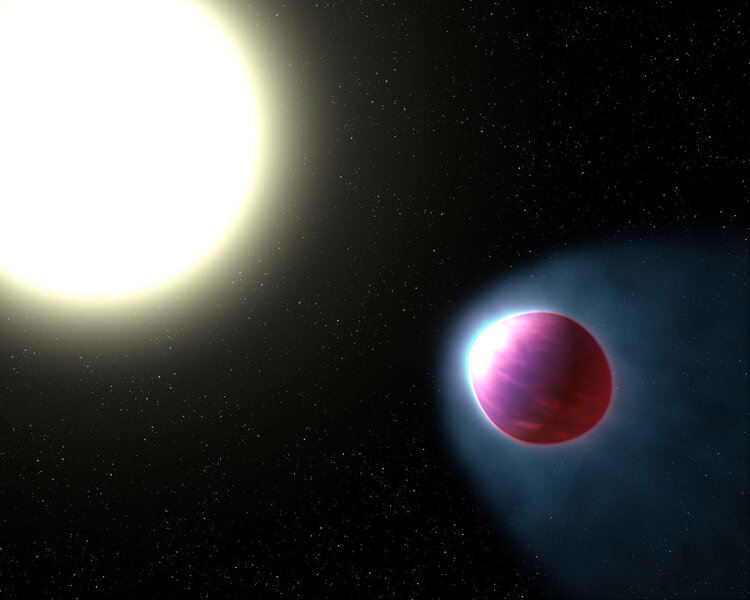Create a free profile to get unlimited access to exclusive videos, sweepstakes, and more!
Three planets found that are doomed to be eaten by their stars
Being near a dying star is bad for a planet.

The astronomy community was shocked in 1995 when the first planet orbiting a Sun-like star was found. Not just because of the discovery itself, but because the planet was what we now call a hot Jupiter: A gas giant orbiting very close to its host star.
In our solar system the gas giants keep a respectable distance form the Sun; Jupiter is five times farther from the Sun than Earth and takes twelve years to orbit. But as we've now seen, many big planets orbit their stars much, much closer in, and take mere days to go around them.
That by itself is cool, but the question then came up: What happens to these planets when their star begins to die? Stars swell up into red giants and become huge, much larger than the orbits of those hot Jupiters. What is the fate of these planets?
It's pretty much what you'd expect: They're doomed. The star will consume them.
Ouch. So, do we see any planets in danger of this?
The very fact that you're reading this article makes the answer obvious. Yes, planets in this exact situation have indeed been found, but mysteries abound. Tidal interactions with their stars should drop them down so close they get engulfed pretty rapidly on a cosmic timescale. Yet we do find them, so how do they get there? Did they form farther out and migrate in? Can we see them getting closer over time? What happens to their atmospheres as they get really close to their stars?
Three new exoplanet discoveries may help answer some of those questions. The clock is definitely ticking for these planets, and while the outlook isn't so good for them, it's great for astronomers (link to paper).
The planets were found in data taken by TESS, the Transiting Exoplanet Survey Satellite, which is sweeping the sky looking for planets. If we see the orbit edge-on, the planet creates a mini-eclipse of its star once per orbit. From that it's possible to get the orbital period, the size of the planet, and more. While they're not common, a few planets orbiting very close to "evolved" stars — ones that are dying and already swelling up into red giants — have been found.
The three new exoplanets are called TOI-2337b, TOI-4329b and TOI-2669b (TOI = TESS Object of Interest). All three host stars for these planets are much larger than the Sun despite only being a little more massive, a clear indication that they're beginning to end. Technically they'd be classed as subgiants, starting to swell up to a few times the Sun's size, but still short of the dozens or even hundreds of times bigger they will get when they become full-on red giants.
That's good! That means we're seeing these planets at just the right moment, just as things really start to cook. And some interesting effects are seen.
The masses of the planets were found by taking spectra and seeing how hard their gravity pulls on their stars. Combined with the size, that gives the density. That's critical, since it tells you what the planet is made of, or if it's weird in some way.
Two of the planets are weird in some way: They're puffy. TOI-4329b and TOI-2669b are much larger than you'd expect given their mass — 4329b is 1.5 times the size of Jupiter despite being less than half its mass, and 2669b is 1.75 times Jupiter's diameter but only 0.6 times its mass.
Why? They're hot. 4329b is getting over 1,800 times as much light and heat from its star Earth does, and is probably over 1,500° C. 2669b isn't quite so cooked, probably around 900° C or so, but is also inflated.
Interestingly, 2337b is weird by not being weird: It doesn't appear to be inflated. It's a little bit smaller than Jupiter, but more massive by 1.6 times. That makes it denser, which may be why it's not puffy despite getting blasted by 1,500 times more energy than Earth is. It has a higher surface gravity, so it's tougher to puff up. Given its orbital period is just under three Earth days — the shortest known for any planet orbiting a dying star, meaning it's very close to the star — that's still surprising.
Clearly, inflation has to do more with the planet than the star. That's already a nice data point for understanding these planets.
What about orbital decay? Complex gravitational interactions between a star and close-in planet will tend to drop it even closer in (this is the same effect, though opposite in direction, that causes the Moon to recede from the Earth by about 4 centimeters per year). 2337b should have the highest rate of decay of the three, but none was detected in the data. The other two don't have enough observations to reliably tell. It looks like for this bit on info more observations will be needed. Unfortunate, but that's science.
The good news is that the two puffy planets are good candidates for future observations to look into their atmospheres. During a transit the planet is between us and the star. Light from the star can pass through the relatively transparent upper atmospheres of those planets before reaching us. Different molecules — like carbon dioxide, water, and so on — absorb light at different colors, so it's possible to determine some of the constituents of the planetary atmospheres.
This has been done already for planets around Sun-like stars. Do these newly discovered planets have noticeably different atmospheres, and if so, could it be because of their evolving stellar hosts? Future observations, perhaps with James Webb Space Telescope, may reveal such secrets.
If this all sounds academic to you I can understand that, but it does hit close to home. In 6 or 7 billion years the Sun too will begin to die, swelling up first into a subgiant and then a proper red giant. It will consume Mercury and Venus, and recent work indicates the Earth is a goner, too.
These new planets may be very different than our home world, but we do have this in common with them: All will be cooked and eaten by their star. Learning about their fate may very well reveal something about ours. If only for our own morbid self-interest, that's worth examining.




























